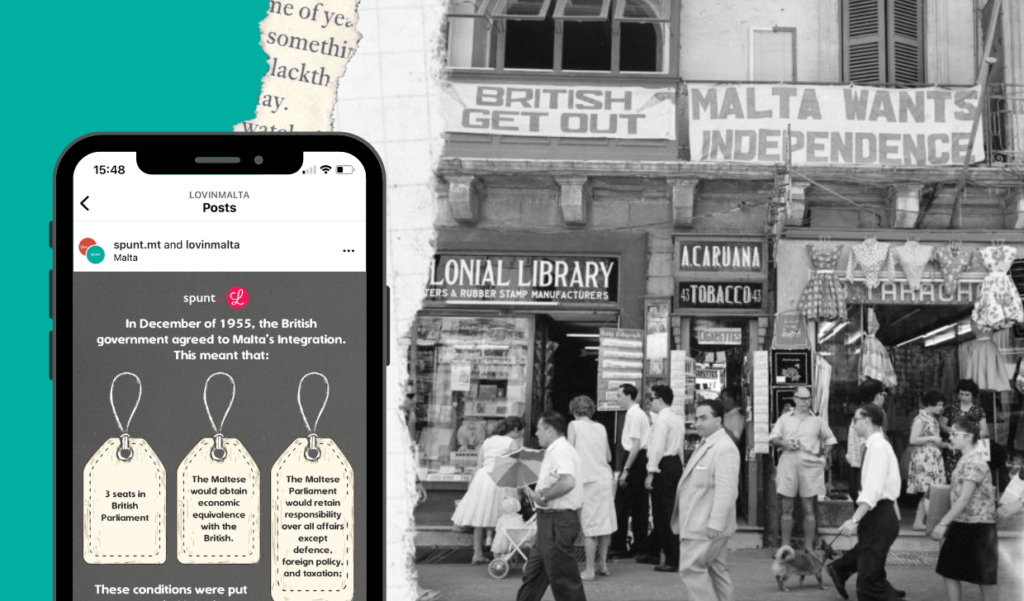From Integration To Independence: How Malta Broke Away From The British Empire

In a 1956 referendum, the Maltese voted in favour of full integration with the UK. However, keen observers might have noticed that Malta, in fact, is not part of the UK. What was Mintoff’s integration plan, and why did it ultimately fail?
The three factions
After WWII, recovery in Malta was slow. Mintoff believed that if Malta were to integrate with the UK, the Maltese people would benefit from the same standards of living of the British.
Conversely, George Borg Olivier’s PN wanted a ‘dominion status’ like Canada, Australia and New Zealand, with the Queen remaining the head of state. The PN pointed out that integration would lead to the loss of Malta’s character, history, culture and ethnicity – which had survived centuries of colonisation.
The PN boycotted the referendum because it did not include their ‘dominion status’ proposal.
The Maltese Catholic Church, led by Archbishop Gonzi, was also against the proposal, fearing that the Church would lose its position of high privilege and influence in Malta, and become secondary to the Anglican Church.
A call for integration
In December of 1955, the British government agreed to Malta’s Integration. This meant that:
- The island would be allocated three seats in the British Parliament (which had 630 members at the time)
- The Maltese Parliament would retain responsibility over all affairs except defence, foreign
policy, and taxation - The Maltese would obtain economic equivalence with the British.
These conditions were put to vote in Malta in February of 1956.
Despite 75% of the votes being in favour of integration, voter turnout stood at 60%, meaning that only 44% of the total Maltese electorate actually voted for integration.
The British Parliament also started getting cold feet. They did not want Malta to set a precedent for the other colonies. Maltese economic equivalence would have cost the British Government £10 million every year, or €280 million in today’s money.
Operation Musketeer
In July 1956, the British launched ‘Operation Musketeer’ from Malta to retake the Suez Canal from Colonel Nasser’s forces. Its ultimate, humiliating failure highlighted the reduced importance of British military presence in the Mediterranean. This fundamental change in foreign policy was the final nail in the coffin for the integration experiment.
The road to independence
Mintoff did not react well to the British government going back on its commitment. He resigned as Prime Minister and declared that “independence remained the only alternative.”
Mintoff’s determination to achieve equivalence clashed with the British government’s reluctance to make the necessary financial commitment. This led to the failure of the integration experiment.
Malta would later go on to follow a path to full independence by 1964.
What if Malta had integrated with the UK?
Réunion, a small island off the coast of Madagascar in Africa, is officially a part of France. Thanks to large French investment, Réunion enjoys vastly higher living standards than its independent neighbours.
However, it remains a poorly diversified economy, dependent on public sector expenditure, with high unemployment and a GDP per capita that is 22% lower than mainland France.
While not directly equivalent, it’s not unreasonable to assume that Malta might have experienced a similar fate.
This article is part of an ongoing collaborative series by Spunt.mt and Lovin Malta.
Lovin Malta is actively seeking new and exciting collaborations in Malta and Gozo. If you have a project you think deserves to join the brand, or are ready for the challenge of being on- or behind-the-camera talent for Lovin Malta, get in touch with us now on [email protected] or [email protected]
Had you ever read about this piece of Maltese history before? Share your thoughts in the comments section.



